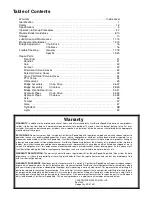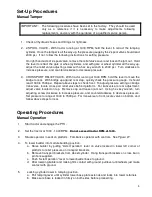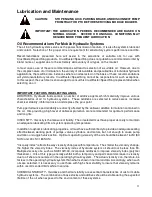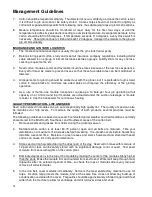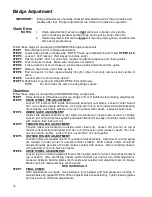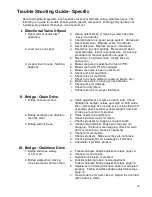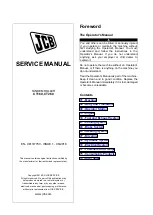
10
Module Builder Guidelines
LOADING AND UNLOADING MODULES WITHOUT PALLETS
Modules built on the ground, without pallets, are transported on a bed-mounted truck or tractor-type
trailer with a multibeam tiltbed using mechanically powered conveyor chains for self-loading and
unloading.
It is very important that palletless modules be tamped extremely well on both ends to prevent sloughing
while transported. These modules should be built on ground area that is elevated, and as firm as
possible, to assure improved traction for the vehicle and adequate drainage should it rain before moving.
Complete step-by-step procedure for loading and unloading a palletless module is explained in the
Operations Manual accompanying both truck or tractor type chain-bed movers.
Care, desire, and ability to understand the operational procedure, thus improving technique and
performance by the operator, is extremely important. Failure to recognize this fact could cause
unnecessary vehicle and power-train breakdowns, module separation, and overall inefficiency during
the peak harvesting and ginning season.
MONITORING THE TEMPERATURE
While stored cotton has proven to increase in grade, care must be exercised to monitor the internal
temperature of the module daily for a few days. Several methods are available; however, the least
complicated is the use of a 36 inch thermometer inserted into eight places on the module, three on
each side and one on each end. Record temperature at each of the eight areas for four days (or longer)
until temperature begins lowering and assuring the operator that heating will not occur. Should the
temperature reach 120 degrees, the module should be ginned immediately. Most modules will reach
95-110 degrees and then drop to the outside temperature. To avoid problems, dump into trailers that
will be ginned immediately during periods of high moisture such as early season, early morning, and late
at night. Regions vary in moisture problems. With good common sense, this potential problem can be
avoided.
TARPING
A variety of tarps and tie-down procedures are now available. The important point is to protect the
cotton from wind, rain, etc., thus insuring the maintenance of quality. Tarp all modules to protect your
investments and profit!
In some areas such as West Texas, Arizona, and New Mexico where rain is not generally a problem,
it is possible at times to leave the cotton uncovered. If this is done, the cotton will not transport without
a cover or van on the truck at normal highway speeds. We recommend tarping every module.
Storing the Module Builder
1.
Set module builder on blocks and remove weight from tires.
2.
Cover breather on oil reservoir.
3.
Lubricate all zerk fittings.
4.
Oil all drive chains.
Summary of Contents for COTTON MODULE BUILDER
Page 1: ...COTTON MODULE BUILDER OWNER S MANUAL 00081000 02 08 ...
Page 28: ...26 Bridge Assembly Chain Drive ...
Page 30: ...28 Bridge Assembly Chainless ...
Page 34: ...32 Hydraulic Lines Chain Drive ...
Page 36: ...34 Hydraulic Lines Chainless ...
Page 42: ...P O Box 1438 Dodge City Kansas 67801 620 227 7106 ...


